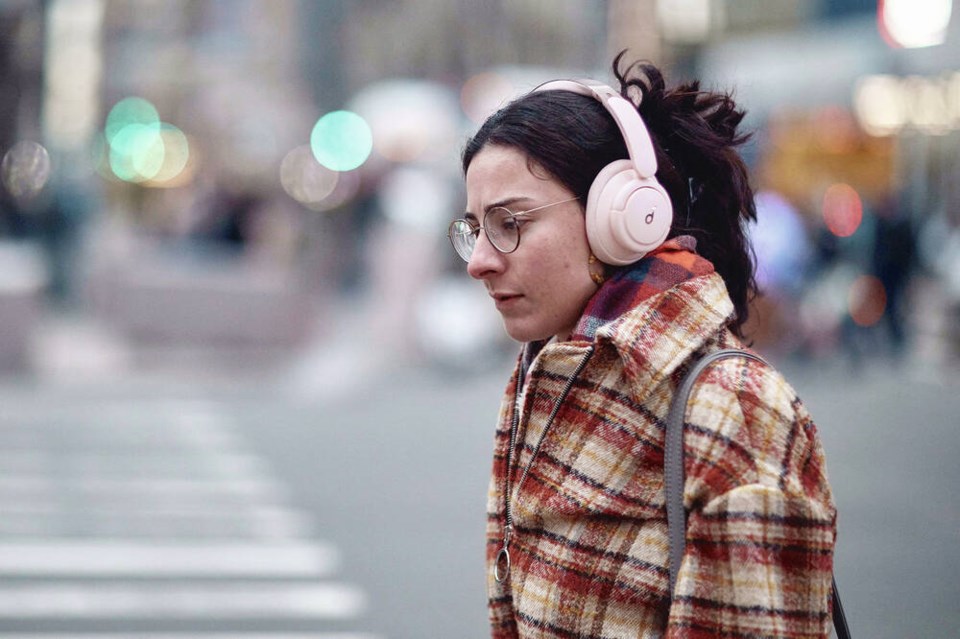The move to ban cell phones from classrooms in B.C., while controversial, was warranted. Young people, like many adults, spend an enormous amount of time with their faces buried in smartphones, seemingly oblivious to the world around them. So a break of a few hours during class isn’t going to hurt anyone.
But it’s the time before and after classes that worries me more.
Running some errands last week took me past some larger schools around the lower Island just as students were heading home for the day. If there was a group of 10 young people crossing the road or waiting at a bus stop, seven to eight of them were using their phones — many of them also plugged into headphones.
Standing on the sidelines watching the latest Tik-Tok is to be expected these days. But being lost to whatever is pouring out through those headphones to the exclusion of everything else is dangerous.
Research from the University of Maryland indicates that wearing headphones causes a deeper form of sensory deprivation than just hearing loss.
Inattentional blindness and cognitive impairment also increase, depending on the type of material being consumed. This can lead to a loss of judgment and coordination.
One US study in 2019 reported on 1,347 pedestrian-motor vehicle incidents, 60 of them involving a fatality, where headphone use was determined by police to be a causal factor.
My route last week also took me along Hillside Avenue, one of the busiest streets in the region. A car stopped at a crosswalk a few metres in front of me. As I pulled up I saw three boys, around 8 or 9 years old, heading across the road. All three were plugged in and tuned out.
They crossed in front of us, then over the traffic island and into the lanes for traffic heading in the other direction. There was no traffic heading the other way — thank God. None of the three moved their heads or made the slightest glance to look at what might have been approaching — their faces glued to their screens. I don’t know if that was inattentional blindness or cognitive impairment or both, but it was one of the more cringeworthy moments I’ve had in the past few months.
Earbud volumes now can easily outmatch a car horn or squealing tires. Regardless of what volume the phone is pumping out, headphone noise cancellation quality has improved a lot over the past few years. This coupled with quieter vehicle engines, often hybrid or electric, means that approaching danger is easily missed.
The miracle of evolution gave humans wonderful tools to react to what we see and hear. One of the best ways we learned to use those skills to avoid danger is our ability to see danger early — before the threat overcomes our ability to react. That’s why we’ve put lights and sirens on emergency vehicles — to let others know in advance that the rules of the road are going to be suspended for a few seconds so first responders can get through.
Inattentional blindness may prevent you from properly processing the information your brain receives at moments like this. For example, you walk past some people who are not entering a crosswalk even though you see a “walk” sign, only to find out the rest of them have stopped to allow a late turning vehicle to get through the intersection — right in front of you.
People are unlikely to give up on their phones no matter how much education or warnings are put in front of them. That ship has sailed. With that in mind, there are some things that can increase your safety while being tuned in.
Be mindful of cognitive distractions, especially in busy areas. If you must listen to something, perhaps wait until you’re in a less travelled area before plugging in.
Wherever you are, stay alert near traffic. Be aware that your senses are degraded when you’re plugged in and make extra effort to scan the roadway for danger.
I’m a podcast junkie but I only ever use one earbud when I’m outside. I at least want to hear that approaching beer truck before I have to dive out of the way.
Though it won’t help with the cognition problem, open-back headphones on low volume will at least permit some other sounds to pass through, allowing for more awareness.
Several times a year, we see the horrible headlines — a car, a bus or a cement truck plows into a crowded bus stop. If I were standing there, I’d want every sense I’d been given. That last-second chance to react to danger is a skill we should never discard, even for Tik-Tok.
>>> To comment on this article, write a letter to the editor: [email protected]




